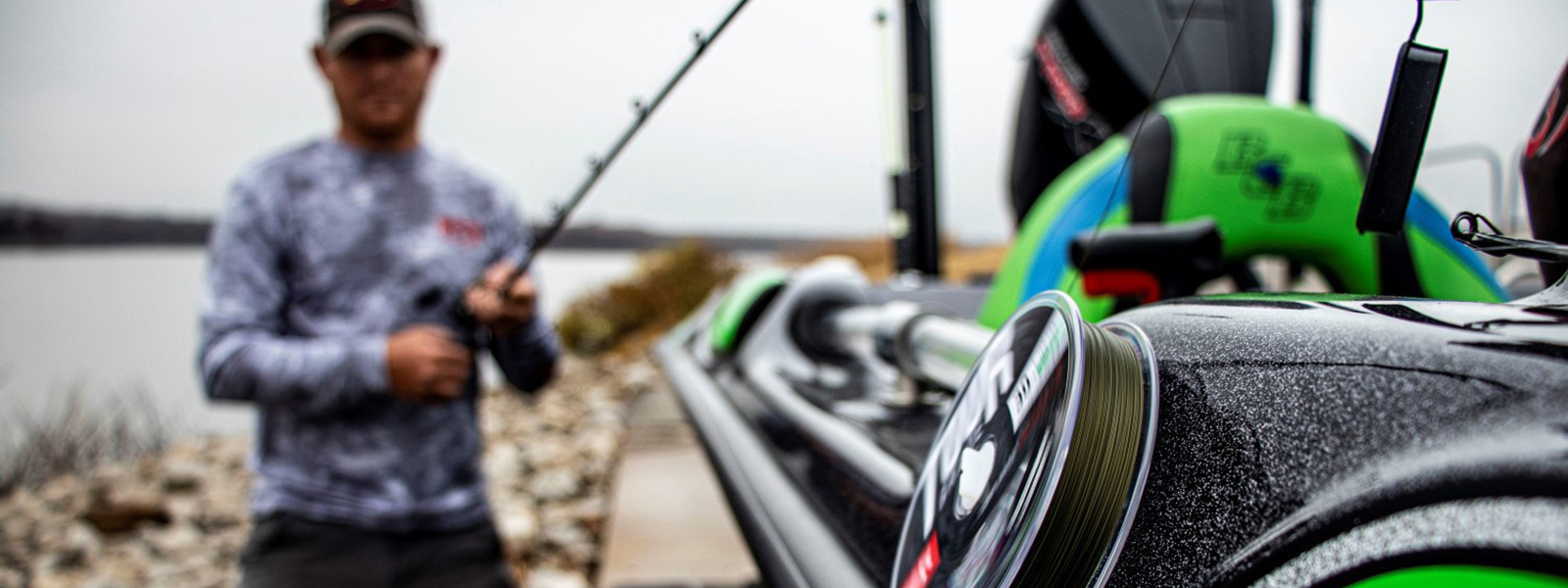By : Mark Hicks
To take full advantage of the superior performance Lew’s baitcast reels deliver, you must spool line onto them the right way. Proper line spooling is also necessary to get the most out of any baitcasting reel.

If you already have your Lew's Baitcast Reel. Start by investing in quality fishing lines, such as Strike King’s Tour Grade or Contra monofilament, fluorocarbon and braid.
An 8- to 10-pound monofilament backing makes for a smooth, even base layer on the spool, Lew’s pro staff angler Kevin Short points out. He fills the spool one half to three quarters full of backing and then ties the backing to whatever line he intends to fish with.
“That way I’m using only 50 to 70 yards of line to finish filling the spool,” Short said. This can be a cost-saving measure, as well as a way to decrease line slipping.
With the reel fixed to a rod, thread the monofilament backing line through all the rod guides starting at the tip guide. Then run the line through the reel’s line guide, which is an easy step to forget.
If the reel’s spool has holes in the center, push the line through them until it extends for about an inch from the opposite side of the spool. Press your thumb against the line and the spool and crank the reel four or five times to lock the line in place. Then cut off the tag line.
If the spool does not have holes, wrap the line around the spool and secure it with an Arbor knot. After tightening the knot, cut off the tag line. Braided line will slip on a spool regardless of the knot used. A monofilament backing eliminates this problem.
The line’s spool must be held upright so the line unwinds off the top of it, Short stressed. If the line unwinds off the bottom of the spool, it will not cast well. Another critical aspect is to apply constant, firm pressure to the line to make it wind on tightly.
Have a helper push a pencil through the middle of the line’s spool. Then have them hold the pencil and apply finger pressure to both sides of the spool to create resistance as you wind. Also apply pressure by running the line through your fingers above the reel.
If no helper is around, you can apply sufficient pressure to monofilament and fluorocarbon lines with your fingers alone. If the line burns your fingers, run it through a towel. Or use the Sidewinder tool from the Strike King Tour Grade Line package and simply stick the winder to an upright surface (like a window, the side of a car or boat, etc) to unspool the line as you wind.
Use a blood knot to connect the monofilament backing to a monofilament or fluorocarbon main line. If the main line is braid, the thin FG knot is an excellent choice for joining the two lines.
A towel is absolutely necessary when spooling braided line, which requires such heavy pressure it would burn or cut your bare fingers. If braid is spooled without heavy pressure, it is more inclined to dig into itself when you get a backlash, make a hard hook set or forcefully pull on a snagged lure.
The reel is full when the line is about 1/8-inch from the top of the spool. Short recommends stopping when the line is even with the bevel on the outer edge of the spool. Underfilling a reel reduces casting distance and cranking speed. Overfilling a spool invites backlashes.
Once you've spooled your baitcaster, we can walk you through the process of adjusting it and casting it. Denny Brauer's tips will help you avoid backlash. Then once you've been out fishing a few times, you can read all about cleaning and maintaining your reel so it always performs its best.
May 2021
March 2024
May 2022
March 2023
July 2022
September 2019
March 2022